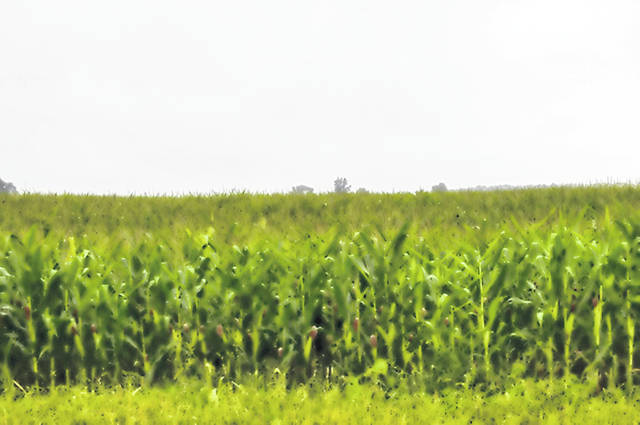
GREENVILLE — Only a few months ago, the rain was making it difficult for area farmers. The challenges were a widespread ripple effect from an inability to get into fields to a livestock feed crisis. It may sound ironic, but now we need rain.
Thanks to a dry spell in July and the first week of August, along with a late crop planting, at least an inch of rain is needed per week through September, says Sam Custer, OSU Extension Educator for Agriculture and Natural Resource for Darke County.
“And no frost before November 1,” continued Custer, a perfect mix necessary to bring crops to maturity.
According to Custer, 12,456 acres were prevented plant with the majority of that corn, and approximately 2,500 acres were failed crops—planted but did not make it.
Back in June, area farmers had gathered to share their concerns with Dorothy Pelanda, Director of the Ohio Department of Agriculture at Buschur Dairy in New Weston.
Pelanda was collecting information related to the challenges farmers were facing due to the rain, coupled with the ongoing trade war. She shared that Governor Mike DeWine was seeking federal disaster aid from U.S. Department of Agriculture Secretary Sonny Perdue. However, Darke County did not meet the disaster designation, not in comparison to northern counties that fared much worse.
Custer calls it a county of two stories wherein southern Darke County crops fared well in comparison to crops north of US Route 36. However, time will be the ultimate judge given looks can be deceiving.
“Some of the crops look really good from the road,” said Custer. “Until you get into them.”
Custer explained that due to the dry conditions last month, some ears did not pollinate well, or did not fully develop, a condition called tip-back. An inch to sometimes two inches of corn doesn’t develop, resulting in missing kernels at the end of the ear.
“When you start losing 20 percent of the ear that cuts into the yield drastically [and] in a hurry,” said Custer. He noted a lot of tip-back and aborted blooms on soybeans. “But you don’t see that from the road.”
Custer believes once yields are reported, Darke County, as the largest corn and soybean producer in the state, could be included in disaster aid. Again, time will tell.
For now, we “Need everybody in the county to pray for more rain, warm temperatures, and no frost before November 1,” said Custer. “We just need it to finish the crops off.”





